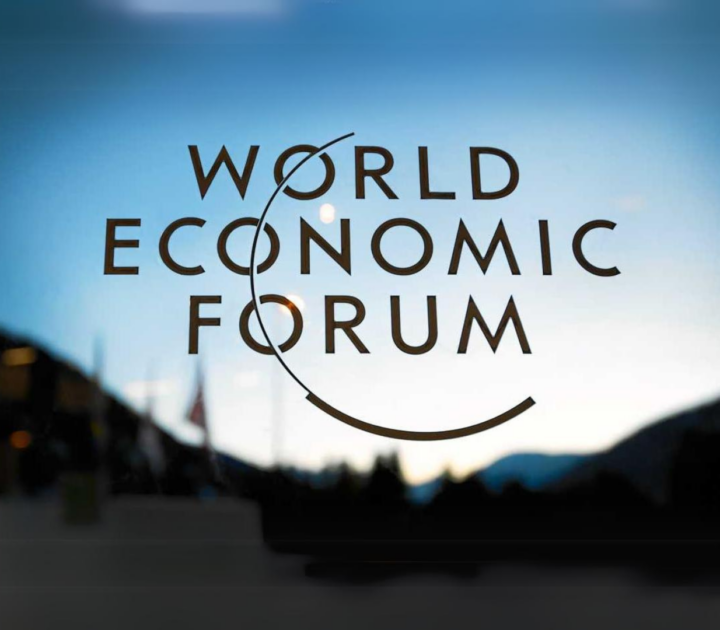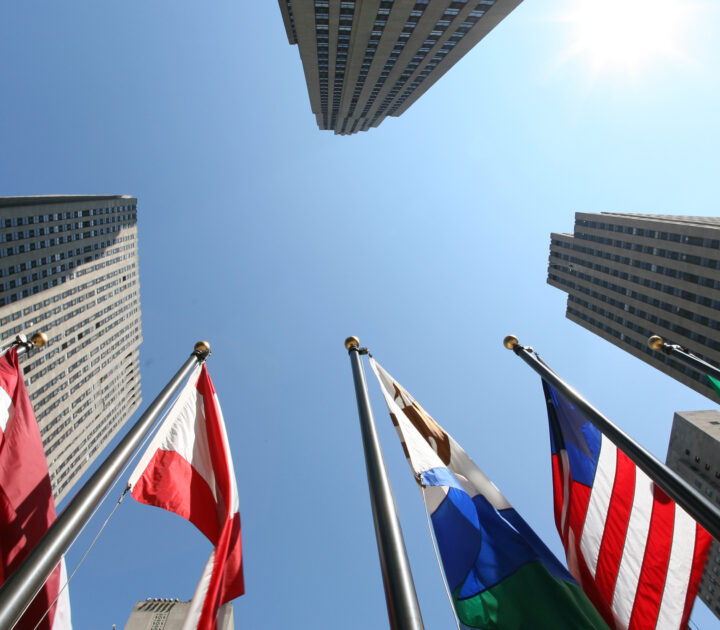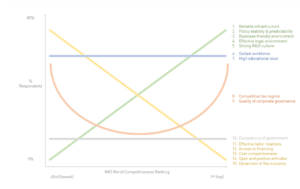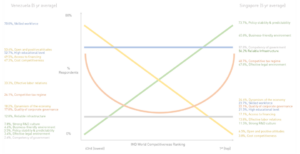
Please tell us: What makes your country appealing?
This is indeed what we ask the mid- and upper-level executives who receive our questionnaire around this time each year. You can imagine…The executives who decide to respond must reflect on what makes their economy attractive as a destination for capital, talent, as well as ideas.
To impose some structure to this daunting question, we provide fifteen different indicators and ask the executives to select the five most important. Subsequently, we rank them by the percentage of responses per indicator from the highest to the lowest. In this way, we can map what the executives perceive as the key attractiveness factors of their economy.
In this edition of the Criterion of the Month I will attempt to classify the information we receive in relation to the ranking of a country. We will observe that, even though each country is unique, there are trends that are related to the level of competitiveness.
Figure 1 provides a visual representation for all 63 economies. In the vertical axis we have the percentage of respondents who select a specific indicator as one of the five choices. The horizontal axis captures the competitiveness of the countries from the lowest to the highest position.
Figure 1: Key Attractiveness Indicators & Competitiveness Rankings, 2018
We have grouped the fifteen indicators in a way that reveals the underlying patterns. Thus, the green curve represents the average of indicators that provide reliability (policy stability, infrastructure, R&D strength) and efficiency (legal and business environments). These are the ones that executives feel make highly competitive economies attractive. Note that these are also not chosen by executives from economies that are ranked low in competitiveness.
The exact opposite is observed for indicators related to production (costs, access to capital, labor relations) and the economy in general (dynamism and open attitudes) captured by the yellow curve. Executives in low ranked countries suggest these as attractive elements of their economy, while executives in competitive economies do not select them.
Interestingly, the criteria related to competencies of the labor force (skilled labor and high educational level) are highly regarded irrespective of the competitiveness ranking. Similarly, the competency of the government enjoys the same low consideration regardless of the country’s competitiveness position.
We need to be careful as to how we interpret the above information. First, the numbers are averages and therefore they may conceal specific idiosyncrasies of countries. Second, an indicator that has been not chosen as appealing does not necessarily mean that it is nonexistent in the economy. Instead, at the current level of development, it may not be one of the most attractive options. It may have been important in the past, like the cost competitiveness for the highly ranked economies, for instance. Or more work is needed in other segments of the economy, for instance, strong R&D culture is developed through competencies, facilities, and an appropriate legal structure.
Considering this explanation, we can tackle the U-shaped orange curve. It shows that tax regime and the level of corporate governance are considered important by executives in the low and high ranks of competitiveness but not in the economies in between.
Let me place the above analysis in the context of two countries: Singapore and Venezuela, one of the most competitive and one of the least competitive economies in the last decade respectively. Figure 2 is the same graph as Figure 1, but this time the left side of the graph outlines the responses from the Venezuelan executives, while the right side presents the Singaporean executives’ choices.
Figure 2: Key Attractiveness Indicators & Competitiveness Rankings for Singapore and Venezuela, 2018
By focusing on two countries, we can observe some specific strengths or weaknesses associated with them. Thus, most developing economies rank the dynamism of their economy high while it is conspicuously absent in the choices of the Venezuelan executives.
In contrast, as we noticed, most economies rank skilled workforce and high educational level as a key attractiveness factor, and few rank the competency of the government high. Singapore’s educational system is highly regarded; however, its economy relies heavily on the international pool of talent. Additionally, its government competency goes hand in hand with the policy stability and predictability, as well as the friendly business environment which are major drivers for Singapore’s long-term competitiveness.
More than 6,300 executives from 63 countries responded to this survey last year. Knowing the market participants’ choices allows public officials and decision makers to evaluate whether the two sectors align with respect to what the attractive indicators of an economy are and act accordingly. The IMD World Competitiveness Center is the humble recipient of these critical statistics.
Research Information & Knowledge Hub for additional information on IMD publications
IMD World Competitiveness Center Report, 8 April 2024
in VoxEU 12 March 2024

in I by IMD 6 February 2024

in I by IMD 6 February 2024


in I by IMD 19 January 2024


in I by IMD 16 January 2024

in I by IMD 9 January 2024

IMD World Competitiveness Center Report, 8 April 2024
Research Information & Knowledge Hub for additional information on IMD publications
in VoxEU 12 March 2024
Research Information & Knowledge Hub for additional information on IMD publications
Research Information & Knowledge Hub for additional information on IMD publications
in I by IMD 6 February 2024
Research Information & Knowledge Hub for additional information on IMD publications
in I by IMD 6 February 2024
Research Information & Knowledge Hub for additional information on IMD publications
Research Information & Knowledge Hub for additional information on IMD publications
in I by IMD 19 January 2024
Research Information & Knowledge Hub for additional information on IMD publications
Research Information & Knowledge Hub for additional information on IMD publications
in I by IMD 16 January 2024
Research Information & Knowledge Hub for additional information on IMD publications
in I by IMD 9 January 2024
Research Information & Knowledge Hub for additional information on IMD publications

